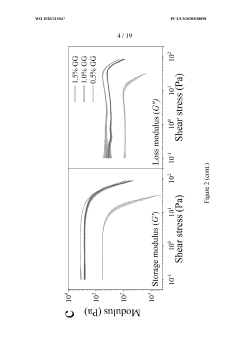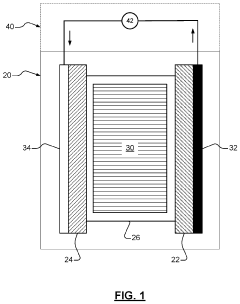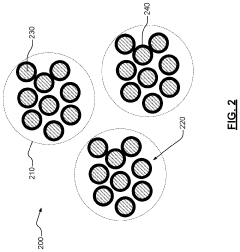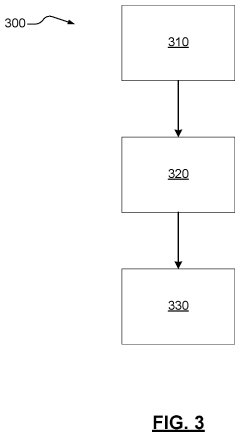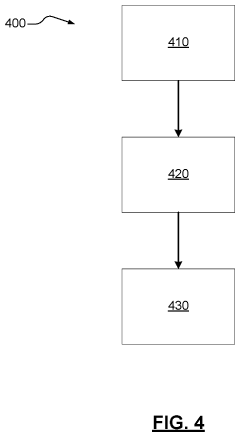Future‑Ready PTFE Applications in Modern Tech
JUN 27, 20259 MIN READ
Generate Your Research Report Instantly with AI Agent
Patsnap Eureka helps you evaluate technical feasibility & market potential.
PTFE Tech Evolution
Polytetrafluoroethylene (PTFE) has undergone significant technological evolution since its accidental discovery by Roy Plunkett in 1938. Initially developed as a refrigerant, PTFE's unique properties quickly led to its adoption in various industries. The material's journey from a laboratory curiosity to a versatile industrial staple marks a fascinating trajectory in materials science.
In the 1940s and 1950s, PTFE's potential was primarily explored in military and aerospace applications due to its exceptional chemical resistance and thermal stability. The material played a crucial role in the Manhattan Project and later found its way into military aircraft components. This period saw the development of basic processing techniques for PTFE, including sintering and ram extrusion.
The 1960s and 1970s witnessed a broadening of PTFE applications in industrial settings. Improvements in manufacturing processes led to the production of PTFE in various forms, including sheets, rods, and tubes. This era also saw the development of modified PTFE grades with enhanced mechanical properties, expanding its use in seals, gaskets, and bearings for demanding environments.
The 1980s and 1990s marked a significant leap in PTFE technology with the introduction of microporous PTFE membranes. This innovation, pioneered by W.L. Gore & Associates, revolutionized the textile industry and found applications in medical devices and filtration systems. Concurrently, advancements in polymer science led to the development of PTFE dispersions and fine powders, enabling new coating technologies.
The turn of the millennium brought about nanotechnology-driven innovations in PTFE. Researchers began exploring PTFE nanocomposites, incorporating nanoparticles to enhance specific properties such as wear resistance and thermal conductivity. This period also saw the development of environmentally friendly processing methods, addressing concerns about the persistence of PTFE in the environment.
In recent years, the focus has shifted towards sustainable PTFE technologies. Efforts are being made to develop recycling methods for PTFE waste and to create bio-based alternatives that mimic PTFE's properties. Additionally, the integration of PTFE with smart materials and the exploration of its potential in emerging fields like 3D printing and flexible electronics represent the cutting edge of PTFE technology evolution.
Throughout its history, PTFE has consistently adapted to meet new challenges and opportunities across various sectors. From its early days as a niche material to its current status as an indispensable component in numerous high-tech applications, PTFE's evolution reflects the broader trends in materials science and engineering. As we look to the future, PTFE continues to be at the forefront of innovation, with ongoing research promising even more advanced and sustainable applications in modern technology.
In the 1940s and 1950s, PTFE's potential was primarily explored in military and aerospace applications due to its exceptional chemical resistance and thermal stability. The material played a crucial role in the Manhattan Project and later found its way into military aircraft components. This period saw the development of basic processing techniques for PTFE, including sintering and ram extrusion.
The 1960s and 1970s witnessed a broadening of PTFE applications in industrial settings. Improvements in manufacturing processes led to the production of PTFE in various forms, including sheets, rods, and tubes. This era also saw the development of modified PTFE grades with enhanced mechanical properties, expanding its use in seals, gaskets, and bearings for demanding environments.
The 1980s and 1990s marked a significant leap in PTFE technology with the introduction of microporous PTFE membranes. This innovation, pioneered by W.L. Gore & Associates, revolutionized the textile industry and found applications in medical devices and filtration systems. Concurrently, advancements in polymer science led to the development of PTFE dispersions and fine powders, enabling new coating technologies.
The turn of the millennium brought about nanotechnology-driven innovations in PTFE. Researchers began exploring PTFE nanocomposites, incorporating nanoparticles to enhance specific properties such as wear resistance and thermal conductivity. This period also saw the development of environmentally friendly processing methods, addressing concerns about the persistence of PTFE in the environment.
In recent years, the focus has shifted towards sustainable PTFE technologies. Efforts are being made to develop recycling methods for PTFE waste and to create bio-based alternatives that mimic PTFE's properties. Additionally, the integration of PTFE with smart materials and the exploration of its potential in emerging fields like 3D printing and flexible electronics represent the cutting edge of PTFE technology evolution.
Throughout its history, PTFE has consistently adapted to meet new challenges and opportunities across various sectors. From its early days as a niche material to its current status as an indispensable component in numerous high-tech applications, PTFE's evolution reflects the broader trends in materials science and engineering. As we look to the future, PTFE continues to be at the forefront of innovation, with ongoing research promising even more advanced and sustainable applications in modern technology.
Market Demand Analysis
The market demand for PTFE (Polytetrafluoroethylene) applications in modern technology is experiencing significant growth, driven by the material's unique properties and versatility across various industries. PTFE's exceptional chemical resistance, low friction coefficient, and high-temperature stability make it increasingly valuable in cutting-edge technological applications.
In the electronics sector, the demand for PTFE is surging due to its excellent dielectric properties and thermal stability. As 5G networks and IoT devices proliferate, PTFE is becoming crucial in high-frequency circuit boards and antenna systems. The material's low signal loss characteristics are particularly beneficial for maintaining signal integrity in high-speed data transmission applications.
The automotive industry is another key driver of PTFE demand, particularly in the rapidly expanding electric vehicle (EV) market. PTFE's heat resistance and chemical inertness make it ideal for use in battery components, fuel cells, and various sealing applications in EVs. As the global push for sustainable transportation intensifies, the demand for PTFE in this sector is expected to grow substantially.
In the aerospace and defense sectors, PTFE's unique combination of properties is highly sought after for advanced composites, coatings, and sealing solutions. The material's ability to withstand extreme temperatures and harsh environments makes it indispensable in aircraft engines, hydraulic systems, and space exploration equipment.
The medical technology field is also contributing to the increased demand for PTFE. Its biocompatibility and non-stick properties make it valuable in implantable devices, surgical instruments, and drug delivery systems. As personalized medicine and minimally invasive procedures advance, the use of PTFE in medical applications is projected to expand significantly.
Environmental technologies represent an emerging market for PTFE applications. The material's chemical resistance and durability make it suitable for use in pollution control equipment, water treatment systems, and renewable energy technologies. As global environmental regulations become more stringent, the demand for PTFE in these applications is expected to rise.
The semiconductor industry, driven by the ongoing miniaturization of electronic devices and the development of advanced chip technologies, is another significant consumer of PTFE. Its use in ultra-pure chemical handling systems and as a coating for semiconductor manufacturing equipment is critical for maintaining the high standards required in chip production.
While the overall market outlook for PTFE applications is positive, it's important to note that the material faces challenges related to sustainability and end-of-life disposal. This has led to increased research into recyclable and eco-friendly alternatives, which may impact future market dynamics. Nevertheless, the unique combination of properties offered by PTFE ensures its continued relevance and demand across a wide range of high-tech applications in the foreseeable future.
In the electronics sector, the demand for PTFE is surging due to its excellent dielectric properties and thermal stability. As 5G networks and IoT devices proliferate, PTFE is becoming crucial in high-frequency circuit boards and antenna systems. The material's low signal loss characteristics are particularly beneficial for maintaining signal integrity in high-speed data transmission applications.
The automotive industry is another key driver of PTFE demand, particularly in the rapidly expanding electric vehicle (EV) market. PTFE's heat resistance and chemical inertness make it ideal for use in battery components, fuel cells, and various sealing applications in EVs. As the global push for sustainable transportation intensifies, the demand for PTFE in this sector is expected to grow substantially.
In the aerospace and defense sectors, PTFE's unique combination of properties is highly sought after for advanced composites, coatings, and sealing solutions. The material's ability to withstand extreme temperatures and harsh environments makes it indispensable in aircraft engines, hydraulic systems, and space exploration equipment.
The medical technology field is also contributing to the increased demand for PTFE. Its biocompatibility and non-stick properties make it valuable in implantable devices, surgical instruments, and drug delivery systems. As personalized medicine and minimally invasive procedures advance, the use of PTFE in medical applications is projected to expand significantly.
Environmental technologies represent an emerging market for PTFE applications. The material's chemical resistance and durability make it suitable for use in pollution control equipment, water treatment systems, and renewable energy technologies. As global environmental regulations become more stringent, the demand for PTFE in these applications is expected to rise.
The semiconductor industry, driven by the ongoing miniaturization of electronic devices and the development of advanced chip technologies, is another significant consumer of PTFE. Its use in ultra-pure chemical handling systems and as a coating for semiconductor manufacturing equipment is critical for maintaining the high standards required in chip production.
While the overall market outlook for PTFE applications is positive, it's important to note that the material faces challenges related to sustainability and end-of-life disposal. This has led to increased research into recyclable and eco-friendly alternatives, which may impact future market dynamics. Nevertheless, the unique combination of properties offered by PTFE ensures its continued relevance and demand across a wide range of high-tech applications in the foreseeable future.
PTFE Tech Challenges
Polytetrafluoroethylene (PTFE) has been a revolutionary material in various industries due to its unique properties. However, as technology advances and new applications emerge, PTFE faces several challenges that need to be addressed to maintain its relevance and expand its utility in modern tech applications.
One of the primary challenges is improving the wear resistance of PTFE. While the material is known for its low friction properties, it tends to wear out quickly under high-stress conditions. This limitation restricts its use in certain high-performance applications where longevity is crucial. Researchers are exploring ways to enhance PTFE's wear resistance through the incorporation of nanoparticles or the development of composite materials that maintain PTFE's desirable properties while improving durability.
Another significant challenge lies in enhancing PTFE's thermal conductivity. Despite its excellent heat resistance, PTFE is a poor conductor of heat, which can be problematic in applications requiring efficient heat dissipation. This limitation is particularly relevant in electronics and automotive industries where thermal management is critical. Scientists are investigating methods to improve PTFE's thermal conductivity without compromising its other beneficial properties.
The adhesion of PTFE to other materials presents another hurdle. PTFE's non-stick nature, while advantageous in many applications, makes it difficult to bond with other materials. This challenge complicates the integration of PTFE into complex systems or multi-material components. Developing effective bonding techniques or surface treatments to improve PTFE's adhesion capabilities is an ongoing area of research.
Environmental concerns also pose a challenge for PTFE applications. The production of PTFE traditionally involves the use of perfluorooctanoic acid (PFOA), a persistent environmental pollutant. While many manufacturers have phased out PFOA, finding equally effective and environmentally friendly alternatives remains a challenge. The industry is actively seeking sustainable production methods and exploring bio-based alternatives to address these environmental concerns.
Lastly, the high cost of PTFE production and processing is a significant barrier to its wider adoption in certain applications. Developing more cost-effective manufacturing techniques and exploring ways to reduce material waste during processing are crucial challenges that need to be addressed to make PTFE more accessible for a broader range of applications.
Overcoming these challenges is essential for expanding PTFE's role in future-ready applications. As researchers and engineers work to address these issues, we can expect to see innovative solutions that will unlock new possibilities for PTFE in modern technology, from advanced electronics to sustainable manufacturing processes.
One of the primary challenges is improving the wear resistance of PTFE. While the material is known for its low friction properties, it tends to wear out quickly under high-stress conditions. This limitation restricts its use in certain high-performance applications where longevity is crucial. Researchers are exploring ways to enhance PTFE's wear resistance through the incorporation of nanoparticles or the development of composite materials that maintain PTFE's desirable properties while improving durability.
Another significant challenge lies in enhancing PTFE's thermal conductivity. Despite its excellent heat resistance, PTFE is a poor conductor of heat, which can be problematic in applications requiring efficient heat dissipation. This limitation is particularly relevant in electronics and automotive industries where thermal management is critical. Scientists are investigating methods to improve PTFE's thermal conductivity without compromising its other beneficial properties.
The adhesion of PTFE to other materials presents another hurdle. PTFE's non-stick nature, while advantageous in many applications, makes it difficult to bond with other materials. This challenge complicates the integration of PTFE into complex systems or multi-material components. Developing effective bonding techniques or surface treatments to improve PTFE's adhesion capabilities is an ongoing area of research.
Environmental concerns also pose a challenge for PTFE applications. The production of PTFE traditionally involves the use of perfluorooctanoic acid (PFOA), a persistent environmental pollutant. While many manufacturers have phased out PFOA, finding equally effective and environmentally friendly alternatives remains a challenge. The industry is actively seeking sustainable production methods and exploring bio-based alternatives to address these environmental concerns.
Lastly, the high cost of PTFE production and processing is a significant barrier to its wider adoption in certain applications. Developing more cost-effective manufacturing techniques and exploring ways to reduce material waste during processing are crucial challenges that need to be addressed to make PTFE more accessible for a broader range of applications.
Overcoming these challenges is essential for expanding PTFE's role in future-ready applications. As researchers and engineers work to address these issues, we can expect to see innovative solutions that will unlock new possibilities for PTFE in modern technology, from advanced electronics to sustainable manufacturing processes.
Current PTFE Solutions
01 PTFE manufacturing processes
Various methods for producing PTFE are described, including polymerization techniques, extrusion processes, and molding methods. These processes aim to improve the quality, efficiency, and properties of the resulting PTFE materials.- PTFE manufacturing processes: Various methods for producing PTFE are described, including polymerization techniques, extrusion processes, and molding methods. These processes aim to improve the quality, consistency, and properties of PTFE products for different applications.
- PTFE composite materials: PTFE is often combined with other materials to create composite products with enhanced properties. These composites may include fillers, reinforcing agents, or other polymers to improve mechanical strength, wear resistance, or thermal conductivity while maintaining PTFE's unique characteristics.
- Surface modification of PTFE: Techniques for modifying the surface of PTFE materials are explored to enhance their properties or compatibility with other substances. These modifications can improve adhesion, wettability, or introduce functional groups for specific applications.
- PTFE in coating applications: PTFE is widely used in coating applications due to its non-stick and low friction properties. Various methods for applying PTFE coatings to different substrates are described, along with techniques to improve coating durability and performance.
- PTFE in membrane technology: The use of PTFE in membrane applications is explored, including the development of porous PTFE membranes for filtration, separation, and other specialized uses. Techniques for controlling pore size, membrane thickness, and overall performance are discussed.
02 PTFE composite materials
PTFE is combined with other materials to create composite structures with enhanced properties. These composites may include reinforcing fibers, nanoparticles, or other polymers to improve strength, wear resistance, or thermal properties.Expand Specific Solutions03 Surface modification of PTFE
Techniques for modifying the surface of PTFE materials are explored to enhance properties such as adhesion, wettability, or biocompatibility. These modifications may involve chemical treatments, plasma processing, or coating applications.Expand Specific Solutions04 PTFE in membrane technology
PTFE is utilized in the development of advanced membrane technologies for various applications, including filtration, separation, and gas diffusion. These membranes leverage PTFE's unique properties such as chemical resistance and hydrophobicity.Expand Specific Solutions05 PTFE applications in specific industries
PTFE finds applications in diverse industries such as automotive, electronics, and medical devices. These applications exploit PTFE's properties like low friction, high temperature resistance, and chemical inertness to solve specific industrial challenges.Expand Specific Solutions
Key PTFE Players
The "Future-Ready PTFE Applications in Modern Tech" landscape is characterized by a mature market with steady growth potential. The global PTFE market size is projected to reach $4.5 billion by 2026, driven by increasing demand in various industries. Technologically, PTFE applications are evolving, with companies like Daikin Industries, AGC Inc., and The Chemours Co. leading innovation in high-performance fluoropolymers. These industry leaders are focusing on developing advanced PTFE formulations for emerging technologies in electronics, automotive, and aerospace sectors. Research institutions such as Ghent University and Kyoto Institute of Technology are contributing to fundamental advancements in PTFE science, potentially opening new application areas. The competitive landscape is diverse, with established chemical giants and specialized manufacturers like Zeus Co. LLC vying for market share through product differentiation and technological expertise.
DAIKIN INDUSTRIES Ltd.
Technical Solution: Daikin has developed advanced PTFE applications for modern tech, focusing on high-performance fluoropolymers. Their OPTOOL™ series utilizes nano-scale surface modification technology to create ultra-low surface energy coatings[1]. These coatings provide excellent water and oil repellency, as well as anti-fouling properties. Daikin has also introduced NEOFLON™ ETFE, a fluoropolymer that combines the properties of PTFE with improved mechanical strength and transparency[2]. This material is increasingly used in architectural applications, such as the ETFE cushions used in modern stadiums and greenhouses. Additionally, Daikin's UNIDYNE™ TG-5010 offers a water-based fluoropolymer coating that provides durable water and oil repellency for textiles, while being more environmentally friendly than traditional fluoropolymer treatments[3].
Strengths: Wide range of PTFE-based products for various industries, strong R&D capabilities, and environmentally conscious innovations. Weaknesses: High production costs and potential regulatory challenges due to environmental concerns about some fluoropolymers.
Nitto Denko Corp.
Technical Solution: Nitto Denko has developed innovative PTFE applications focusing on advanced materials for electronics and energy sectors. Their TEMISH™ series of porous PTFE membranes offers high breathability and water resistance, finding applications in smartphones, wearable devices, and automotive electronics[14]. In the semiconductor industry, Nitto's NITOFLON™ PTFE tapes and films provide excellent insulation and heat resistance for wafer processing and packaging[15]. The company has also developed PTFE-based proton exchange membranes for fuel cells, contributing to the advancement of clean energy technologies[16]. Nitto's PTFE-enhanced adhesive technologies have enabled the creation of high-performance tapes for aerospace and automotive applications, offering excellent temperature resistance and durability.
Strengths: Strong presence in the electronics industry, diverse PTFE product range, and focus on high-growth technology sectors. Weaknesses: Intense competition in the electronics materials market and potential challenges in scaling up new PTFE technologies.
PTFE Core Innovations
Fluoropolymer shear-thinning INKS and methods of making and using same
PatentWO2020215047A1
Innovation
- Development of shear-thinning inks comprising PTFE particles, a medium, and a shear-thinning agent like gellan gum, combined with a multistage thermal treatment process for direct ink writing, allowing for the creation of complex PTFE structures with tunable mechanical properties.
Modified binders for electrochemical cells that cycle lithium ions and methods of forming the same
PatentPendingUS20240113300A1
Innovation
- Development of modified polytetrafluoroethylene (PTFE) binders with a polymeric shell coating on PTFE nanoparticles, including polymers like polyethylene oxide and humidity-tolerant lithium salts, to reduce side reactions and enhance performance.
PTFE Sustainability
The sustainability of PTFE (Polytetrafluoroethylene) has become a critical focus in modern technological applications. As industries strive for more environmentally friendly practices, the longevity and recyclability of PTFE have gained significant attention. PTFE's exceptional chemical resistance and thermal stability contribute to its extended lifespan, reducing the need for frequent replacements and minimizing waste generation.
One of the key aspects of PTFE sustainability is its potential for recycling. While traditionally challenging due to its chemical inertness, recent advancements in recycling technologies have opened new possibilities. Mechanical recycling methods, such as grinding and pelletizing, allow for the reuse of PTFE in various applications without significant loss of properties. Additionally, chemical recycling techniques are being developed to break down PTFE into its constituent monomers, enabling the production of virgin-quality material.
The durability of PTFE also plays a crucial role in its sustainability profile. Its resistance to wear, corrosion, and extreme temperatures ensures that PTFE-based components and coatings maintain their performance over extended periods. This longevity reduces the frequency of replacements, thereby conserving resources and energy associated with manufacturing and installation processes.
Furthermore, the non-stick properties of PTFE contribute to energy efficiency in various applications. In industrial settings, PTFE-coated equipment requires less energy for cleaning and maintenance, leading to reduced water and chemical consumption. This indirect environmental benefit extends the sustainability impact of PTFE beyond its immediate application.
As environmental regulations become more stringent, the development of eco-friendly PTFE alternatives is gaining momentum. Research into bio-based fluoropolymers and PTFE-like materials derived from renewable resources is underway. These innovations aim to maintain the desirable properties of PTFE while reducing its environmental footprint and dependence on fossil-based raw materials.
The future of PTFE sustainability also lies in its integration with other advanced materials and technologies. Composite materials incorporating PTFE are being engineered to enhance overall product performance and lifespan. Additionally, the application of nanotechnology to PTFE is opening new avenues for improved efficiency and reduced material usage in various industries.
In conclusion, the sustainability of PTFE in modern technological applications is multifaceted, encompassing its recyclability, durability, energy efficiency, and potential for eco-friendly alternatives. As research and development in this field continue to progress, PTFE is poised to play a significant role in the transition towards more sustainable industrial practices and product designs.
One of the key aspects of PTFE sustainability is its potential for recycling. While traditionally challenging due to its chemical inertness, recent advancements in recycling technologies have opened new possibilities. Mechanical recycling methods, such as grinding and pelletizing, allow for the reuse of PTFE in various applications without significant loss of properties. Additionally, chemical recycling techniques are being developed to break down PTFE into its constituent monomers, enabling the production of virgin-quality material.
The durability of PTFE also plays a crucial role in its sustainability profile. Its resistance to wear, corrosion, and extreme temperatures ensures that PTFE-based components and coatings maintain their performance over extended periods. This longevity reduces the frequency of replacements, thereby conserving resources and energy associated with manufacturing and installation processes.
Furthermore, the non-stick properties of PTFE contribute to energy efficiency in various applications. In industrial settings, PTFE-coated equipment requires less energy for cleaning and maintenance, leading to reduced water and chemical consumption. This indirect environmental benefit extends the sustainability impact of PTFE beyond its immediate application.
As environmental regulations become more stringent, the development of eco-friendly PTFE alternatives is gaining momentum. Research into bio-based fluoropolymers and PTFE-like materials derived from renewable resources is underway. These innovations aim to maintain the desirable properties of PTFE while reducing its environmental footprint and dependence on fossil-based raw materials.
The future of PTFE sustainability also lies in its integration with other advanced materials and technologies. Composite materials incorporating PTFE are being engineered to enhance overall product performance and lifespan. Additionally, the application of nanotechnology to PTFE is opening new avenues for improved efficiency and reduced material usage in various industries.
In conclusion, the sustainability of PTFE in modern technological applications is multifaceted, encompassing its recyclability, durability, energy efficiency, and potential for eco-friendly alternatives. As research and development in this field continue to progress, PTFE is poised to play a significant role in the transition towards more sustainable industrial practices and product designs.
PTFE Regulatory Aspect
The regulatory landscape surrounding PTFE applications in modern technology is complex and evolving, reflecting the material's widespread use and potential environmental impacts. Globally, regulatory bodies have implemented various measures to ensure the safe production, use, and disposal of PTFE products.
In the United States, the Environmental Protection Agency (EPA) regulates PTFE under the Toxic Substances Control Act (TSCA). The EPA has established reporting requirements for manufacturers and importers of PTFE and its precursors, particularly focusing on perfluorooctanoic acid (PFOA) and related long-chain perfluorinated compounds. These regulations aim to minimize environmental and health risks associated with PTFE production.
The European Union has taken a proactive stance through the Registration, Evaluation, Authorization, and Restriction of Chemicals (REACH) regulation. REACH requires manufacturers and importers to register PTFE and provide safety data. The EU has also restricted the use of PFOA in PTFE production, with a complete ban effective from July 2020.
In Asia, countries like Japan and South Korea have implemented similar regulations. Japan's Chemical Substances Control Law (CSCL) classifies PTFE as a priority assessment chemical substance, requiring manufacturers to report production and import volumes. South Korea's Act on Registration and Evaluation of Chemicals (K-REACH) mandates registration and risk assessment for PTFE and related substances.
Regulatory bodies worldwide are increasingly focusing on the environmental persistence of PTFE and its potential to break down into harmful substances. This has led to stricter controls on PTFE waste disposal and recycling. Many countries now require specialized handling and treatment of PTFE-containing products at the end of their lifecycle.
The medical device industry faces particularly stringent regulations for PTFE use. The U.S. Food and Drug Administration (FDA) and the European Medicines Agency (EMA) have established guidelines for PTFE in medical implants and devices, emphasizing biocompatibility and long-term safety.
As research continues to unveil potential health and environmental impacts of PTFE and related compounds, regulatory frameworks are likely to become more stringent. Future regulations may focus on promoting alternative materials, enhancing recycling technologies, and further restricting the use of PFAS (per- and polyfluoroalkyl substances) in PTFE production.
Manufacturers and users of PTFE must stay abreast of these evolving regulations to ensure compliance and mitigate risks. This regulatory landscape is shaping the future of PTFE applications, driving innovation in production methods, and encouraging the development of more environmentally friendly alternatives.
In the United States, the Environmental Protection Agency (EPA) regulates PTFE under the Toxic Substances Control Act (TSCA). The EPA has established reporting requirements for manufacturers and importers of PTFE and its precursors, particularly focusing on perfluorooctanoic acid (PFOA) and related long-chain perfluorinated compounds. These regulations aim to minimize environmental and health risks associated with PTFE production.
The European Union has taken a proactive stance through the Registration, Evaluation, Authorization, and Restriction of Chemicals (REACH) regulation. REACH requires manufacturers and importers to register PTFE and provide safety data. The EU has also restricted the use of PFOA in PTFE production, with a complete ban effective from July 2020.
In Asia, countries like Japan and South Korea have implemented similar regulations. Japan's Chemical Substances Control Law (CSCL) classifies PTFE as a priority assessment chemical substance, requiring manufacturers to report production and import volumes. South Korea's Act on Registration and Evaluation of Chemicals (K-REACH) mandates registration and risk assessment for PTFE and related substances.
Regulatory bodies worldwide are increasingly focusing on the environmental persistence of PTFE and its potential to break down into harmful substances. This has led to stricter controls on PTFE waste disposal and recycling. Many countries now require specialized handling and treatment of PTFE-containing products at the end of their lifecycle.
The medical device industry faces particularly stringent regulations for PTFE use. The U.S. Food and Drug Administration (FDA) and the European Medicines Agency (EMA) have established guidelines for PTFE in medical implants and devices, emphasizing biocompatibility and long-term safety.
As research continues to unveil potential health and environmental impacts of PTFE and related compounds, regulatory frameworks are likely to become more stringent. Future regulations may focus on promoting alternative materials, enhancing recycling technologies, and further restricting the use of PFAS (per- and polyfluoroalkyl substances) in PTFE production.
Manufacturers and users of PTFE must stay abreast of these evolving regulations to ensure compliance and mitigate risks. This regulatory landscape is shaping the future of PTFE applications, driving innovation in production methods, and encouraging the development of more environmentally friendly alternatives.
Unlock deeper insights with Patsnap Eureka Quick Research — get a full tech report to explore trends and direct your research. Try now!
Generate Your Research Report Instantly with AI Agent
Supercharge your innovation with Patsnap Eureka AI Agent Platform!



